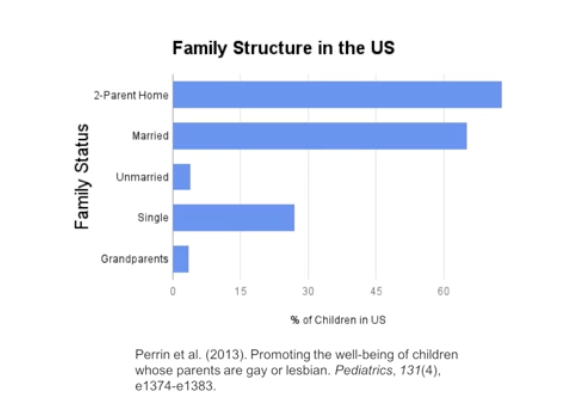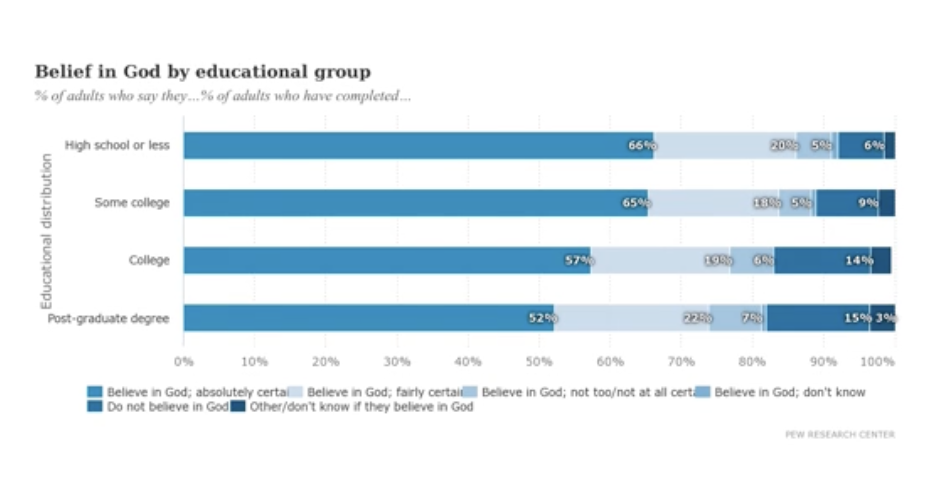PSYC 190 - Self Control, Family Structure
1/49
There's no tags or description
Looks like no tags are added yet.
Name | Mastery | Learn | Test | Matching | Spaced |
|---|
No study sessions yet.
50 Terms
(VIDEO 3.35) Children & Disrespect
children seem to understand fairly early (perhaps in infancy) that angry, violent and selfish people are not as nice, friendly, peaceful and sharing people
the problem is acting in accordance to their own beliefs and moral compass
they lose control a lot more frequently
(VIDEO 3.35) Why do kids lose control more often?
they lose control because their brains are different from ours
children’s prefrontal cortex is slow to develop and slow to become connected up to other parts of the brain
(VIDEO 3.35) The brain development
brain is made up of billions of nerve cells (neurons) which form complex networks that do all of the computations that drive our behavior and form our experiences of the world
its important to understand that these cells communicate using electricity
gray & white matter are slow to develop in the prefrontal cortex, slower than in other areas of the brain
white matter in the frontal cortex continues to develop well into adolescence
our prefrontal cortex plays a huge role in making plans and deciding what to do and white matter is imporant to enforcing these plans, sending out signals for action, suppressing thoughts/impulses
(VIDEO 3.35) Types of Cells
gray matter cells
most nerve cells are pretty tiny and their roots acting as tendrils of communication with nearby cells
white matter cells: incredibly long and connects entire regions of the brain to one another
coated in a fatty tissue called myelin which acts as insulation
this insulation insures that signals that are sent across different areas of the brain are preserved and aren’t blurred by all of the other electrical signals in the brain
if this insulation degenerates signals can’t travel efficiently
causes negative results for movement & other important biological and cognitive functions
(VIDEO 3.36) Executive function
elicits a metaphor of the brain as an organization, that features many processes that need to be coordinated
broken down into four parts
1. attentional control: ability to select and attend to important information
2. working memory (short-term memory): ability to keep track of things or juggle them in our minds eye (ex: holding numbers in mind when doing mental math)
3. inhibitory control (self-control): ability to inhibit or suppress unwanted thoughts or action
4. cognitive flexibility: ability to quickly tasks or to view an old problem in a new way
5. thinking: reasoning, problem-solving and planning
(VIDEO 3.36) Children who perform well on executive function
1. increased cooperation in classroom settings
2. better at being able to focus on tasks
3. fewer problems with behavioral issues at school
4. better academic achievement
5. better health & financial outcomes later in life
(VIDEO 3.36) How is executive function tested?
in a previous video on bilingualism
‘Go No Go Task’ : in this task you had to clap for one thing like frogs but not for another thing like flowers → required stopping (inhibitory control)
cognitive flexibility
Marshmallow Task (Walter Mischel)
(VIDEO 3.36) Cognitive flexibility
multi-dimensional card sort task
involves sorting cards, according to multiple dimensions
(see example from lab of Dr. Yuo Munakata → Professor at the University of Colorado)
young kids don’t have trouble learning the rules of the game, instead their problem is switching from one rule to another
(VIDEO 3.36) Marshmallow Task - Walter Mischel
the child is presented with a single marshmallow and then is left alone with it for up to 10 mins and if they can wait and not eat the marshmallow then they will receive two marshmallows in exchange
Mischel found that the results predicted important life outcomes
kids who could wait longer performed significantly better on their SAT
(VIDEO 3.36) Study by Moffit & Colleagues (1972-2005)
traced 1000 kids from 1972 to 2005 and found a massive study and found that executive function tested at 3 & 5 years of age predicted important life outcomes more than 30 years later
found that parent, teacher and self-reports of impulsivity, aggression, hyperactivity and lack of persistence on tasks was predictive of:
in teens: it predicted smoking, high school dropout & teenage pregnancy
in adults: it predicted substance abuse, poor physical health, low income, low saving & high rates of criminal conviction
(VIDEO 3.37) Executive function & ADHD
ADHD (Attention Deficit Hyperactivity Disorders)
defined by problems of paying attention, hyperactivity and difficulty controlling behavior
behaviors like difficulty sustaining attention to tasks, tendency to make careless errors in school work, problems listening when spoken to, problems following through on instructions and finishing task, easily distracted etc.
(VIDEO 3.37) Receiving an ADHD diagnosis
these problems have to be sufficiently serious that they’re disrupting the child’s life, making it difficult for them to function
(VIDEO 3.37) American Centers for Disease Control and Prevention on ADHD
estimate that 10-11% of kids in the U.S actually receive a diagnosis of ADHD
boys being about 3x more likely than girls to receive the diagnosis
this level of diagnosis has increased in recent years
diagnoses have increased considerably because of changes in how doctors diagnose it rather than because of new environmental factors
(VIDEO 3.37) Controversies on ADHD
researchers have very little understanding of the specific workings of ADHD
we do know that it’s highly heritable
(VIDEO 3.37) Heritability of ADHD (Findings)
one recent review which summarized the findings of 18 different studies found that on average genetics accounts for about 77% of the variability between children’s ADHD symptoms
(VIDEO 3.37) Treatment for ADHD
there isn’t a perfected treatment
in many cases kids between the ages of 2 & 5 receive prescription drug treatments
about 75% of the time this is their first line of treatment
(VIDEO 3.38) Center for Disease Control and Prevention Study
reports that among 2-5 year old kids who have access to either medicaid or to healthcare through their parents’ employer, about 5-6% received a diagnosis of ADHD
¾ of these received prescription drugs as treatment
in particular, most kids received stimulant drugs, including amphetamine and methylphenidate (Ritalin)
few of these same kids were receiving other forms of help
a much smaller percentage, fewer than half, received cognitive behavioral therapy
this is significant because currently based on clinical evidence, the CDC recommends behavioral therapy as a first line
(VIDEO 3.38) How medication works in children ADHD
the use of stimulants to treat ADHD is a little bit counterintuitive
we generally associate stimulants with more excitation
in kids w/ADHD, these drugs increased focus and behavior control as well as measurable long-term reductions in brain abnormalities that are associated with ADHD with no serious long-term side effects
(VIDEO 3.38) Alternative Treatments for ADHD
one relatively mainstream approach is ‘tools of the mind’
involves changing entire classrooms to improve executive function in all kids
(VIDEO 3.38) Tools of the Mind
This curriculum (designed by Adele Diamond at UBC in Canada) involves teaching kids tools that externalize their thoughts
allows them to become aware of them and better control of these thoughts
tools:
1. private speech: talking to oneself while doing a difficult task to remember what comes next
2. use of physical objects: to remind kids of which task they’re currently doing
3. active play: children learn best when they direct their own energies and learn through active play rather than being forces to suppress their desires
(VIDEO 3.38) Other possible treatments for ADHD
there’s a growing literature on the use of mindfulness meditation to help children train executive function
kids sit for short periods, once or twice a day, maybe five minutes wile instructions to notice breathing, to notice one’s own body, to notice thoughts come and go and become aware of one’s own mental states
(VIDEO 3.38) American Academy of Pediatrics
recommended neurofeedback
similar to meditation but simply adds an external feedback
placing non-invasive sensors on the child’s that measure electrical activity in their brain, a sound or a visual feedback can be created and the child can attempt to change the shape of the feedback
this method tells you when you’re succeeding and when your mind is wandering
(VIDEO 3.38) What steps should parents take if child is struggling? (ADHD)
start by getting a referral to a trained cognitive behavioral therapist who specializes in ADHD
with a trained clinician, parents can develop practices that the child can adopt both at home and in the school
(VIDEO 3.39) Family structure & a child’s moral life
Harvard researcher Richard Weissbourd has argued that moral development is fundamentally linked to emotional developmental
children who suffer from persistent negative emotions may be less able to experience feelings like caring, responsibility to others, and idealism about life which are arguably important foundations to a healthy moral outlook
(VIDEO 3.39) Family Structure in the US

(VIDEO 3.39) Single-parenting families (Sweden study)
examine the link between family structure and important life outcomes
in total, they looked at data from almost a million Swedish families
around 900,000 of the kids in the sample were raised in two-parent households while 65,000 were raised by single parents (somewhat lower rate than in the US)
(VIDEO 3.39) Sweden study findings (single-parent families)
children from single-parent families exhibited higher risk of psychiatric disease, suicide, suicide attempt, injury and addiction to drugs or alcohol
these results were found even after adjusting for family income and the parents’ own psychiatric status
the authors concluded that growing up in a single-parent family imposes significant risks upon children (major factor being access to economic resources)
(VIDEO 3.39) Additional studies on single-parent families
other major studies find similar results, including studies conducted in the U.S
these negative effects appear to grow the longer the child lives with a single parent
is greater for boys relative to girls
(VIDEO 3.39) Single parents vs. parents who stay together
it is possible that the parents rather than the parenting or single parenting are what explain children’s outcome
ex. divorce is predicted by low executive function early in life and executive function is heritable → parents who have low executive should be more likely to have kids with low executive function and more likely to get divorced
its possible that children from single-parent families struggle has to do with sharing genetic predispositions
(VIDEO 3.39) Literature on the effects of divorce
a large summary of 92 studies found that if you look at very early studies there is large negative consequences found but more recent studies find much smaller negative effects of divorce on children
of the 92 studies → most negative consequences of divorce were found for high-conflict families
(VIDEO 3.39) Why have negative effects of divorce decreased?
divorce has become much more common and studies show it’s more accepted
(VIDEO 3.39) High-conflict families
highest amount of animosity between parents before and during the divorce
the amount of conflict leading up to the divorce was one of the strongest predictors of how kids fared after the separation
findings suggest:
Single parents can do just fine and the problem isn’t the parenting but rather the conditions in a relationship
children who are prone to behavioral problems may be more likely to have parents with problems controlling behavior & resolving conflict amicably
(VIDEO 3.39) Children of divorce parents vs parent death
large summary of studies tell us here is that kids who lose a parent due to premature death fall right in between those who live in two-parent & single parent
these kids have lower academic achievement, lower self-esteem, and poorer conduct than kids in two-parent families but fare better on each of these measures than children in divorced families
(VIDEO 3.39) Advice for parents on separating
getting separated may be better than staying together if there’s conflict in the home, and is likely to have a smaller effect if both parents are financially stable and if they can support each other/stay friendly despite their differences
(VIDEO 3.39) Same-sex couples
around 14,000 adoptees, about 4% in the US, live with gay or lesbian parents
the gender and sexual orientation of parents has no known effects on children
Researchers Ellen Perrin & Benjamin Siegel:
children raised by gay & lesbian parents demonstrated resilience (in regards to social, psychological & sexual health)
Dr. Charlotte Patterson concludes that: research has failed to reveal important differences in the adjustment or development of child by same-sex couples
(VIDEO 3.40) Pew Research Center (Study)
nonpartisan research organization
surveyed 35,000 Americans in all 50 states (to study differences between religious and non-religious)
found that religious faith differs by age, by marital status, by income, etc.
(VIDEO 3.40) Belief in God by age group

(VIDEO 3.40) Belief in God by household income

(VIDEO 3.40) Belief in God by educational group

(VIDEO 3.40) Sharing Study
children aged 5-12 were given a bunch of stickers and allowed to share as many as they chose with another child
researchers found that non-religious children shared more stickers than christian and muslim children
when they showed kids videos of people pushing or bumping someone else, Christians and Muslims said that the actions were meaner than did non-religious kids and recommended harsher punishments
the study included socioeconomic status, like education & income
(VIDEO 3.40) Researchers at Duke University
found that atheist kids are less likely to care about what the cool kids think & less likely to express racist beliefs
other studies show that non-religious adults are less likely to be vengeful, are less authoritarian & more tolerant than religious adults
(VIDEO 3.40) Conclusions on Religion
there is no reason to believe that raising your kids without religion will have serious negative consequences
if anything, the evidence points to greater levels of generosity, less racism, and greater tolerance
doesn’t mean that these things are caused by non-belief but it does suggest that these outcomes are possible without religion
(VIDEO 3.40) Other Correlational data (religion)
people raised in religious households report higher level of happiness than their non-religious peers, despite the fact that religious households tend to be less affluent & less education
(VIDEO 3.40) Pew study (part 2)
found that in adults about 40% of believers report being very happy compared to 29% of non-believers
(VIDEO 3.40) Why might religion afford differences in happiness?
2015 study - found that religious people tend to be happier when they live in predominantly religious countries and that this edge may stem in part from non-religious people being socially excluded or being otherwise socially unusually in their cultural context
other studies → happiness is more strongly related to social religious practices like attending services and community events than with individual practices like prayer or mediation
(VIDEO 3.40) Maximizing Benefits for your children
the way to maximize the benefits of religion for your child is to be active in your community’s religious practices and if you don’t believe, what may be most important is to find ways for you and your child to become more connected to your neighbors and community
(VIDEO 3.41) Spanking as a punishment
the risks are substantial and the possible benefits are pretty much non-existent
children who get spanked are later more violent which in turn leads them to get spanked even more
(VIDEO 3.41) Spanking Stats
90% of parents in the US report having spanked their child at least once
about 60% of mothers have done so within the last week
mothers spank more than fathers
average → children are spanked three times a week; about 1.5% getting spanked more than 15 times
less educated and less wealthy parents spank more
more common among African American parents & Protestant parents
boys are more likely to be spanked than girls
(VIDEO 3.41) Gedeon Deak - Effectiveness of spanking
short term → equally or perhaps a little more effective at getting children to stop a behavior
long term → a number of negative outcomes
damage done to the parent-child relationship
does not help with long-term compliance
(VIDEO 3.41) Negative effects on parent-child relationships
effect on parent-child relationships isn’t understood in a lot of detail partly because of cultural differences of how spanking is viewed